Dmitriy Hanuka (Host):
Welcome back to the 3D Media Live podcast. Today’s guest is Bryan Green, CEO of The Look, a top fitness center focused on serious weight loss and getting people back in shape. Bryan’s been at it for 20+ years—he’s worked with Disney and pro teams like the Laker Girls. Bryan, welcome!
Bryan Green (Guest):
Thanks for having me, Dmitriy.
Getting into fitness & a brutal recovery
Hanuka: How did you get into this industry?
Green:
Honestly, by accident. I was a competitive skier—U.S. Ski Team development—freestyle and alpine. My body started hurting constantly, so I pivoted to college at Cal State Fullerton, studying kinesiology, political science, speech, and theater. I got into their elite BFA acting program… then found out I needed full reconstructive hip surgery. They told me I’d be on crutches for months and might miss the program.
I designed my own PT plan from research—this was dial-up internet days—so I hit libraries, found studies, and proposed a stability-focused approach to the U.S. Ski Team PTs. Two other athletes had the same hip surgery; when I left, they were still on crutches. I was down to a cane in two months and back to a normal gait by around four months. I even returned to coaching ski a year later. Doctors had said I might never ski or even walk normally again.
Later, a surgeon reviewing my MRIs asked, “When did you break your back?” Turned out my T12 and L1 had fused from an old fracture—likely from a big cliff drop—causing a gait issue that wrecked the hip.
Hanuka: What made your rehab different?
Green:
I emphasized stability and reflexive contractions—training the stabilizers and the brain-to-muscle “fire” after atrophy. We used bands, unstable implements (like small balls) during presses, then progressed to single-leg stability. Think “wiggle your big toe” from Kill Bill: re-teach the signal, then load it intelligently.
On gadgets, “shortcuts,” and body sculpting fads
Hanuka: Do vibration plates or EMS suits replace real training?
Green:
No. They can create isometric/timing effects, but you must train through a range of motion. Holding a position on a vibrating platform won’t build strength evenly across ROM.
Hanuka: What about CoolSculpting?
Green:
I’ve tried it and worked with med spas. My experience: little to no effect versus solid diet/training. Some people even report paradoxical fat effects. If a procedure “works” only with a strict diet, how do you credit the machine?
GLP-1 meds (Ozempic/Wegovy, tirzepatide, etc.)
Hanuka: GLP-1s like Ozempic/Wegovy are everywhere. Thoughts?
Green:
They’ve reduced bariatric surgeries, which is huge. Mechanism-wise, they increase satiety signaling—your gut tells your brain “I’m full” sooner—so people eat less. But we don’t know all long-term effects yet. Known issues include slowed GI motility; you typically need to stop them ~2 weeks before surgery.
Big caution: muscle loss. If you just “eat less,” you’ll often lose 50–75% of the weight as lean mass when protein and resistance training aren’t dialed. Result: “Ozempic face/butt,” clothes look smaller but you don’t look (or feel) great out of them. Also, rebound appetite is common when stopping—people can get ravenous and regain.
Best practice if someone does use GLP-1s:
Prioritize protein and resistance training to preserve muscle.
Be wary of compounded versions and dosing creep.
It’s expensive; motivation can turn into just chasing higher doses.
Diets, protein, and sustainability
Hanuka: What’s the “best” diet?
Green:
The one you can stick to. Keto, paleo, carnivore—if it’s sustainable and monitored, great. But most “diets” are inherently temporary. The universal: caloric deficit to lose fat, adequate protein to protect/build muscle, and consistent training.
I use a car analogy:
Protein = engine oil (protects/rebuilds muscle).
Carbs = gas (daily energy).
Fats = gear oil (hormones, focus, some energy).
For protein intake, I like ~1g per pound of lean body mass (not total body weight). We had you around ~170 g/day. It’s tough at first—use shakes, high-protein meals, and plan ahead, especially on social days.
Hanuka: If someone overeats protein without training?
Green:
Calories still matter—excess becomes stored energy. But practically, most people under-eat protein. Start by hitting protein, then manage carbs/fats to meet your goal.
On ketosis and “hard ketones”: Ketosis can work, but it’s hard to sustain and can come with “keto flu” and odor issues. Exogenous ketone products may show ketones on a meter but don’t replace long-term habit change.
Looks, aging, and confidence
Green:
Men usually come for health/performance and accept looks as a bonus; many women feel pressured by aesthetics first, especially in image-driven communities. Over-filler/Botox can drift toward an “alien” look. Aging can be sexy—think confidence and capability, not just thinness. Fit beats skinny every time.
Hanuka: And partners matter—support and affirmation go a long way.
Green:
Totally. A good partner who says “You look great” regularly changes everything.
Training goals vs. extremes
Green:
I don’t train bodybuilders. I care about looks + function: play with your kids, ski, climb stairs without huffing. Massive size often kills function. For women, chasing stage-lean abs can disrupt hormones; many influencers are quietly on PEDs. Don’t compare to that. Aim for balanced, healthy, strong.
Hormones & TRT (for men)
Green:
Men feel best around 500–700 ng/dL total testosterone. Below ~200 is low. Age, stress, sleep, illness affect levels. If you’re persistently exhausted, weak, low-libido, test your labs. TRT can help when clinically indicated, but it can suppress fertility and requires monitoring (to manage estrogen conversion, hematocrit, hair loss risk, etc.).
What’s “natty”?
No exogenous hormones or peptides. Creatine is still considered natural—well-studied, safe for decades, great for strength and cognition. If labs justify TRT, do it responsibly with a physician.
The simple formula
Green:
Lift 3–5x/week (progressive overload).
Protein ≈ 1 g per lb lean mass.
Caloric deficit for fat loss; refeed to maintain/build after.
Plan social meals—bank carbs/fats earlier in the day.
Sleep like it’s your job.
Hanuka:
Couldn’t agree more. Shortcuts can have a place, but nothing replaces consistent training and nutrition.
Green:
Exactly.
Hanuka:
Bryan’s right next door, so we’ll do more episodes soon—maybe on starting his own show. If you’re in Southern California and want efficient, no-BS training, check out The Look. Thanks, Bryan.
Green:
Thank you—let’s go work out.





